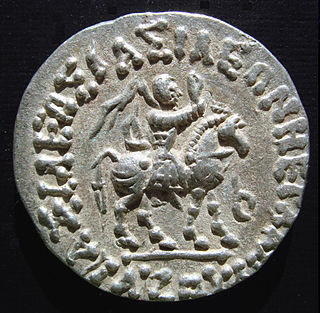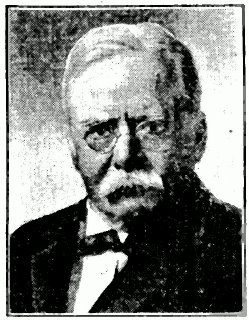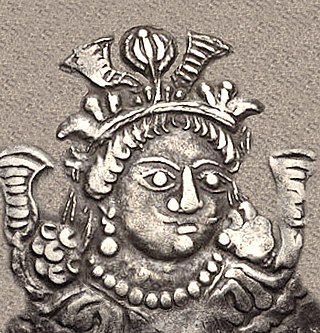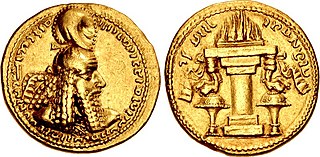This article needs additional citations for verification .(January 2025) |
Pratipal Bhatia (1936-2024) was an Indian historian and numismatist, specialising in the coins of early medieval India. She was Professor of History at Delhi University.
This article needs additional citations for verification .(January 2025) |
Pratipal Bhatia (1936-2024) was an Indian historian and numismatist, specialising in the coins of early medieval India. She was Professor of History at Delhi University.
“Her doctoral thesis was published in 1970 as The Paramaras; it remains the standard historical reference for this central Indian dynasty.” – John Deyell [1]
After completing her PhD on the Paramaras at Delhi University in 1962, Bhatia did post-doctoral studies at the University of Pennsylvania (1964-65) and the School of Oriental and African Studies, London (1967-69). She then returned to Delhi University and took up a position in the Department of History, eventually rising to Professor and Head of Department (1974-2001). After retirement, she became a fellow of the Asia Research Institute in Singapore (2002-2003), and a Senior Fellow of the History Department of the National University of Singapore (2004-2012). [2]
She was a member of many societies: honorary member of the International Numismatic Council, and a fellow of the Royal Numismatic Society, Royal Asiatic Society, American Numismatic Society, Oriental Numismatic Society, and a life member of the Indian History Congress and the Numismatic Society of India.
Her memorial was held at Gurudwara Shri Rakab Ganj Sahib, in New Delhi, on 10 August 2024.

The Kushan Empire was a syncretic empire formed by the Yuezhi in the Bactrian territories in the early 1st century. It spread to encompass much of what is now Tajikistan, Uzbekistan, Afghanistan, Pakistan, Eastern Iran and Northern India, at least as far as Saketa and Sarnath, near Varanasi, where inscriptions have been found dating to the era of the Kushan emperor Kanishka the Great.

Azes II, may have been the last Indo-Scythian king, speculated to have reigned circa 35–12 BCE, in what is Pakistan today. His existence has been questioned; if he did not exist, artefacts attributed to his reign, such as coins, are likely to be those of Azes I.

The Coinage of India began anywhere between early 1st millennium BCE to the 6th century BCE, and consisted mainly of copper and silver coins in its initial stage. The coins of this period were Karshapanas or Pana. A variety of earliest Indian coins, however, unlike those circulated in West Asia, were stamped bars of metal, suggesting that the innovation of stamped currency was added to a pre-existing form of token currency which had already been present in the Janapadas and Mahajanapada kingdoms of the Early historic India. The kingdoms that minted their own coins included Gandhara, Kuntala, Kuru, Magadha, Panchala, Shakya, Surasena, Surashtra and Vidarbha etc.

James Prinsep was an English scholar, orientalist and antiquary. He was the founding editor of the Journal of the Asiatic Society of Bengal and is best remembered for deciphering the Kharosthi and Brahmi scripts of ancient India. He studied, documented and illustrated many aspects of numismatics, metallurgy, meteorology apart from pursuing his career in India as an assay master at the mint in Benares.

Abhiraka was a ruler from the Kshaharata dynasty, of the Western Satraps. He is known through his coins, which are found in the northern Pakistan area of Chukhsa, and then later in the south, suggesting a southern migration at some point, possibly in search for trade. His coins have been found in Afghanistan and as far as Arab states of the Persian Gulf. The coinage, reminiscent of the coinage of the Indo-Greeks, has on the obverse a winged Nike with Greek legend "CATRAPATOY CATRAΠOY AYBIPAKOY", and the reverse shows a lion or a horse facing a wheel, with Brahmi or Kharoshthi legend around Khaharatasa Khatrapasa Abhirakasa jayatasa Abhirakasa".

Awadh Kishore Narain was an Indian historian, numismatist and archaeologist, who published and lectured extensively on the subjects related to South and Central Asia. He was well known for his book, The Indo-Greeks, published by Clarendon Press in 1957, in which he discussed the thesis of British historian Sir William Woodthorpe Tarn.
Udayāditya was a Paramara ruler of Malwa region of central India, who succeeded Jayasimha I. He was succeeded by his son, either Lakshmadeva or Naravarman.
Simon Everard Digby was an English oriental scholar, translator, writer and collector who was awarded the Burton Medal of the Royal Asiatic Society and was a former Fellow of Wolfson College, Oxford, the Honorary Librarian of the Royal Asiatic Society and Assistant Keeper in the Department of Eastern Art of the Ashmolean Museum in Oxford. He was also the foremost British scholar of pre-Mughal India.

Joe Cribb is a numismatist, specialising in Asian coinages, and in particular on coins of the Kushan Empire. His catalogues of Chinese silver currency ingots, and of ritual coins of Southeast Asia were the first detailed works on these subjects in English. With David Jongeward he published a catalogue of Kushan, Kushano-Sasanian and Kidarite Hun coins in the American Numismatic Society New York in 2015. In 2021 he was appointed Adjunct Professor of Numismatics at Hebei Normal University, China.

Edward James Rapson FBA was a British numismatist, philologist and professor of Sanskrit at the University of Cambridge. He was a fellow of St. John's College. Rapson died following a sudden collapse at dinner at St. John's.
Dr. Shridhar Vasudev Sohoni (1914–2002) was an eminent scholar of Sanskrit, and a noted antiquarian and numismatist. He was an officer in the Indian Civil Service, and later in his career served as the Chief Secretary of Bihar, Lokayukta of Bihar, and the Vice-Chancellor of Lalit Narayan Mithila University and Tilak Maharashtra University. As a scholar, he published extensively and authored and edited several books and essays on a variety of subjects, including archaeology, architecture, Buddhism, literature, music, Sanskrit, sculpture, and administration. Dr. S.V. Sohoni was honoured with many awards and a festscrift recognised him as one of the founders of the Academy of Indian Numismatics and Sigillography. A festschrift celebrating his Sanskrit scholarship had already been published a decade earlier. He was conferred D.Litt. degrees by four institutions, University of Delhi, Vikram University, Lalit Narayan Mithila University, and Nalanda University. Dr. Sohoni was serving on the Regulating Council of the Bhandarkar Oriental Research Institute when he died.
John Allan, was a British numismatist and scholar of Sanskrit. Allan was a noted numismatist and produced the first systematic study of the coins the Gupta Empire, which remains a standard reference today.
Richard Bertram Whitehead, usually cited as R. B. Whitehead, was a British numismatist and an authority on Indian coins. He played "a major role in establishing the study of coinage as an essential technique of Indian historical research", for which he received numerous awards and honours, and was the first Honorary Fellow of the Numismatic Society of India.

The Alchon Huns, also known as the Alkhan, Alchono, Alxon, Alkhon, Alakhana, and Walxon, were a nomadic people who established states in Central Asia and South Asia during the 4th and 6th centuries CE. They were first mentioned as being located in Paropamisus, and later expanded south-east, into the Punjab and Central India, as far as Eran and Kausambi. The Alchon invasion of the Indian subcontinent eradicated the Kidarite Huns who had preceded them by about a century, and contributed to the fall of the Gupta Empire, in a sense bringing an end to Classical India.

Kidara I fl. 350–390 CE) was the first major ruler of the Kidarite Kingdom, which replaced the Indo-Sasanians in northwestern India, in the areas of Kushanshahr, Gandhara, Kashmir and Punjab.

Sasanian coinage was produced within the domains of the Iranian Sasanian Empire (224–651). Together with the Roman Empire, the Sasanian Empire was the most important money-issuing polity in Late Antiquity. Sasanian coinage had a significant influence on coinage of other polities. Sasanian coins are a pivotal primary source for the study of the Sasanian period, and of major importance in history and art history in general. The Sylloge nummorum Sasanidarum is the most important primary work of reference for Sasanian coins.

The Sasanian coinage of Sindh refers to a series of Sasanian-style issues, minted from 325 to 480 CE in Sindh, in the southern part of modern Pakistan, with the coin type of successive Sasanian Empire rulers, from Shapur II to Peroz I. Together with the coinage of the Kushano-Sasanians, these coins are often described as "Indo-Sasanian". They form an important part of Sasanian coinage.

Indo-Sasanian coinage was major type of coinage of the post-Gupta Empire period, in the areas of Gujarat and Rajasthan in western India and in the Gangetic region, from the 6th century to the 12th century CE. These coins were derived from the Sasanian coinage design, probably transmitted to the subcontinent by the Alchon Huns as they invaded northern India circa 500 CE. They are an important component of Indian coinage.
Hind was the name of a southeastern Sasanian province lying near the Indus River in modern-day southern Pakistan. The boundaries of the province are obscure. The Austrian historian and numismatist Nikolaus Schindel has suggested that the province may have corresponded to the Sindh region, where the Sasanians notably minted unique gold coins of themselves. According to the modern historian C. J. Brunner, the province possibly included—whenever jurisdiction was established—the areas of the Indus River, including the southern part of Punjab.

The jital was a silver coin introduced by the Kabul Shahis around 750 CE.